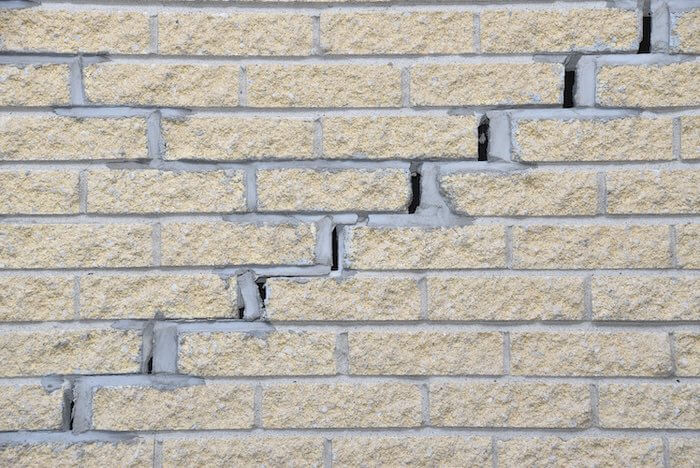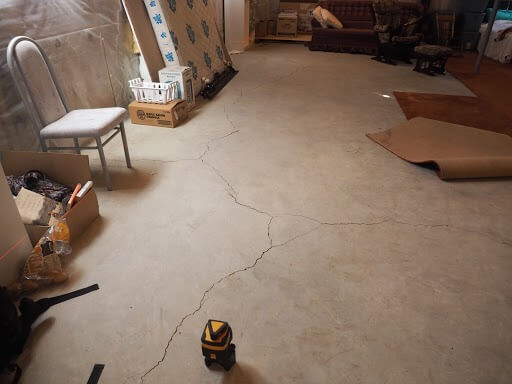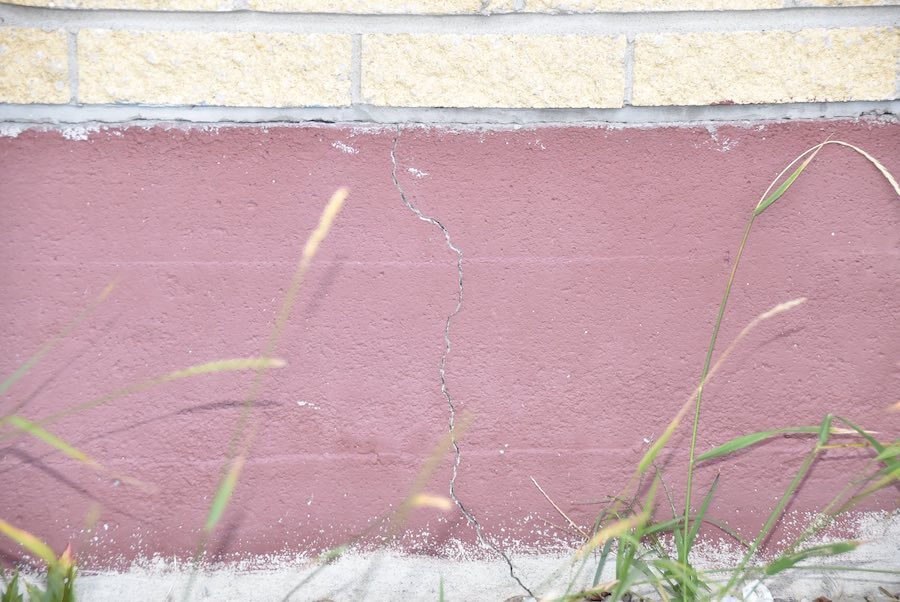 Ground movements can cause significant damage to buildings or other structures especially when foundations consist of shallow elements or grade supported slabs. There are several issues that may cause or contribute to ground movement and will result in potential structural deterioration. These include:
Ground movements can cause significant damage to buildings or other structures especially when foundations consist of shallow elements or grade supported slabs. There are several issues that may cause or contribute to ground movement and will result in potential structural deterioration. These include:
- Poor overall building planning for the site conditions prior to construction;
- Overload of the building or infrastructure;
- Freeze-thaw action;
- Deficient construction;
- Modification of the physical and mechanical properties of the soils under the foundation and/or grade supported slab.
In this last case, the drying or wetting of clay deposits may generate physical damage to structures including large commercial buildings, multi-storey residential buildings, single family dwellings, retaining walls or even viaducts.
To understand how moisture changes within clay soil can affect a structure, it is important to understand the composition and behaviour of the particles in the deposit, which are mostly composed of clay and silt. These particles are classified as “fine”, measuring less than 0.075 mm in diameter (approximately the diameter of a hair). Since water cannot circulate between these particles, clayey deposits generally have a very high-water content. Water then represents an important component in this type of soil, and the fine particles which compose the clay deposit have a particular interaction with water.
Different elements can contribute to lowering the water content of a clay deposit, which causes them to dry out. First, the water table can vary seasonally, with higher moisture present in the spring and during periods of high precipitation and lower moisture present in other seasons. Changes in the runoff of surface water, which is related to precipitation, often has a direct impact on the moisture content in the ground. The presence of mature leafy trees can also contribute to the drying of soils. In fact, the roots of those trees absorb a large amount of water present in the grounds, especially in the summertime and during dry months. The more the trees grow in diameter and height, the deeper and wider the roots grow and the more water the trees consume.
Infrastructure like concrete sidewalks, asphalt roads, and drainage conduits also contribute to the dryness of clayey deposits, limiting the water runoff that a soil can absorb by preventing water from reaching it. Finally, construction work requiring large excavations which are left exposed for a long period can also result in the drying of a clay soil.
When clay deposits dry, they lose a fraction of their volume, creating voids beneath the foundation elements. These voids can result in unsupported foundations and concrete slabs, which can cause an increase in stresses in the building materials. These voids can lead to settlement of surface foundations, and/or the grade supported concrete slab. If additional water is absorbed by the clay material, the soil can increase volumetrically, resulting in heaving of building components.
 First, wide cracking can appear in the foundations and the slab on grade, increasing the risk of water infiltration. Cracks in mortar joints of brick cladding are often observed on buildings affected by the change in moisture levels in clay soils. These cracks usually follow a “stair pattern” and are often located above a crack in the foundation. Also, sagging can be noted at the floor level and some doors or windows can be hard to open and close. Cracks also generally appear in the gypsum interior finishes, more specifically in the corners of the door and window frames. These cracks are also commonly located in an area where a crack is observed in the foundation.
First, wide cracking can appear in the foundations and the slab on grade, increasing the risk of water infiltration. Cracks in mortar joints of brick cladding are often observed on buildings affected by the change in moisture levels in clay soils. These cracks usually follow a “stair pattern” and are often located above a crack in the foundation. Also, sagging can be noted at the floor level and some doors or windows can be hard to open and close. Cracks also generally appear in the gypsum interior finishes, more specifically in the corners of the door and window frames. These cracks are also commonly located in an area where a crack is observed in the foundation.
To prevent foundation movement and related damage, many elements must be taken into consideration when constructing a building. First, knowledge of the soil conditions and appropriate design of the foundation will limit the risk of damage due to changing moisture content in the clay. For example, even though it is not always necessary, the installation of piled foundations with a structural slab will eliminate any risk associated with changing moisture content of clay deposit. Also, measuring water levels to keep the moisture content in the soil constant must be considered. For example, adequate surface drainage away from the foundation and maintaining an appropriate distance between the limit of a building and any leafy mature tree will assist in maintaining constant soil conditions.
 When a building seems to be affected by the drying of clay deposits, the foundation should be inspected by a qualified expert to confirm the cause of the damage observed. Depending on the extent of the damage noted, local repairs may be necessary. Repairs could consist of the sealing the foundation cracks to limit the water infiltration or the installation of a structural steel plate to reinforce the foundation and limit future damages. In a major case, underpinning of the foundation using structural piles under the existing conventional foundations may be required.
When a building seems to be affected by the drying of clay deposits, the foundation should be inspected by a qualified expert to confirm the cause of the damage observed. Depending on the extent of the damage noted, local repairs may be necessary. Repairs could consist of the sealing the foundation cracks to limit the water infiltration or the installation of a structural steel plate to reinforce the foundation and limit future damages. In a major case, underpinning of the foundation using structural piles under the existing conventional foundations may be required.
To learn more or to talk to our experts, contact a member of our structural team.
